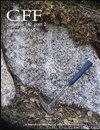古岩石生物学简介
IF 1.2
4区 地球科学
Q2 GEOLOGY
引用次数: 4
摘要
越来越多的关于岩石生物学生命的深层和表层化石遗骸的文献,通常与火成岩有关,需要在古生物学中展开一个分支学科。在这里,我们引入了古岩石生物学这一新的辅助分支学科来研究化石岩石生物学。我们提出了区分旧石器生物档案与传统档案的关键标准,并讨论了采样策略以及科学观点。大多数古石生物材料由深层生物圈化石组成,为了突出这些化石的相关性,我们提出了来自洛克内陨石坑的真菌化石的新数据。Lockne岩心中的真菌化石之前已经被描述过,但在这里,我们提供了新的见解,发现了生殖结构的存在,表明真菌是本地的。我们还发现这些真菌经常溶解和穿透次生方解石,描绘了岩石生物在地球生物循环中的作用。我们希望,古石生物学这一分支学科的正式确立不仅能突出一个被忽视的古生物学领域,也能简化未来对内、外石化石材料的研究,而且能提高我们对深部生物圈历史的认识。本文章由计算机程序翻译,如有差异,请以英文原文为准。
Introducing palaeolithobiology
ABSTRACT A growing literature of deep but also surficial fossilized remains of lithobiological life, often associated with igneous rocks, necessitates the unfolding of a sub-discipline within paleobiology. Here, we introduce the term paleolithobiology as the new auxiliary sub-discipline under which fossilized lithobiology should be handled. We present key criteria that distinguish the paleolithobiological archive from the traditional one and discuss sample strategies as well as scientific perspectives. A majority of paleolithobiological material consists of deep biosphere fossils, and in order to highlight the relevance of these, we present new data on fungal fossils from the Lockne impact crater. Fungal fossils in the Lockne drill cores have been described previously but here we provide new insights into the presence of reproductive structures that indicate the fungi to be indigenous. We also show that these fungi frequently dissolve and penetrate secondary calcite, delineating the role lithobionts plays in geobiological cycles. We hope that the formalization of the sub-discipline paleolithobiology will not only highlight an overlooked area of paleobiology as well as simplify future studies of endo- and epilithic fossil material, but also improve our understanding of the history of the deep biosphere.
求助全文
通过发布文献求助,成功后即可免费获取论文全文。
去求助
来源期刊

Gff
地学-地质学
CiteScore
2.80
自引率
10.00%
发文量
11
审稿时长
>12 weeks
期刊介绍:
GFF is the journal of the Geological Society of Sweden. It is an international scientific journal that publishes papers in English covering the whole field of geology and palaeontology, i.e. petrology, mineralogy, stratigraphy, systematic palaeontology, palaeogeography, historical geology and Quaternary geology. Systematic descriptions of fossils, minerals and rocks are an important part of GFF''s publishing record. Papers on regional or local geology should deal with Balto-Scandian or Northern European geology, or with geologically related areas. Papers on geophysics, geochemistry, biogeochemistry, climatology and hydrology should have a geological context. Descriptions of new methods (analytical, instrumental or numerical), should be relevant to the broad scope of the journal. Review articles are welcome, and may be solicited occasionally. Thematic issues are also possible.
 求助内容:
求助内容: 应助结果提醒方式:
应助结果提醒方式:


